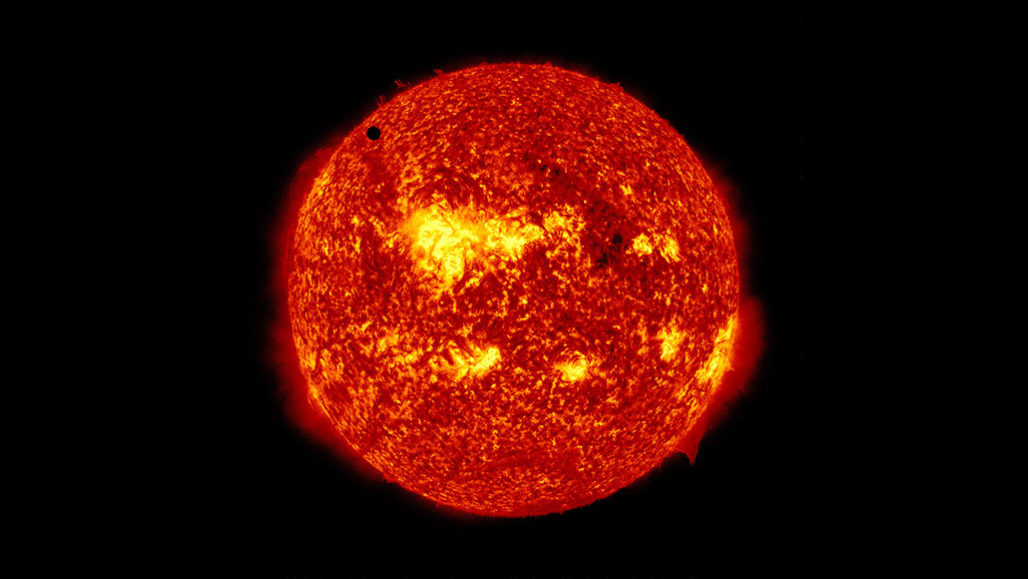Let’s learn about the sun
This hot ball of gas is the reason we are all here on Earth

This is a close-up of our sun. The tiny dot in the upper left is the planet Venus passing in front of it.
NASA/SDO, AIA
You shouldn’t look directly at the sun, but it doesn’t take a close look to appreciate its power. Earth’s personal star, the sun supplies the light and heat that keeps everything alive.
Not just essential, the sun feels nice, too. Exposure to the sun’s rays actually produces a feel-good chemical in the brain. But too much can make our skin burn, and can even cause skin cancer later in life. Enjoy the sun, but make sure you use sunscreen.
Standing outside in the summer, the sun’s rays feel hot. But the star itself is far hotter than any heat you’ve ever experienced. The interior of the sun is 15 million degrees Celsius (27 million degrees Fahrenheit). The outer surface, or corona, is a hundred times hotter. This hot, hot heat comes from the super-heated hydrogen and helium inside the sun. The gases get so hot that their atoms start to come apart, and plumes of the resulting plasma rise to the surface of the star. There, magnetic waves turn up the heat even more. Look closely with the right telescope, and the sun’s surface is revealed as beautiful boiling golden bubbles.
While our sun is called a yellow dwarf star, it’s not that small. It’s medium sized — about 1.4 million kilometers (864,000 miles) across, and about 109 times the size of Earth. And it’s actually white. Through our atmosphere, though, we perceive the sun as yellow.
Want to know more? We’ve got some stories to get you started:
An active sun is a somewhat smaller sun: The sun shrinks and grows a tiny bit over cycles lasting about 11 years (7/9/2018) Readability: 7.5
See the sun in dazzling detail: Images from a newly opened telescope show boiling plasma on the star’s surface (2/21/2020) Readability: 6.8
How the outer sun gets so hot: Magnetic waves boost the corona to extreme temperatures (8/17/2011) Readability 8.9
Explore more
The Parker Solar Probe aims to touch the sun
NASA’s Parker probe spots rogue waves and magnetic islands on the sun
The sun’s giant heat elevators
Magnetic fields may supercharge the sun’s release of heat
Harness the power of the sun with this solar oven project from NASA. Line an open box with aluminum foil, and use it to reflect sunlight into the box. The solar oven can heat s’mores, no fire needed.







